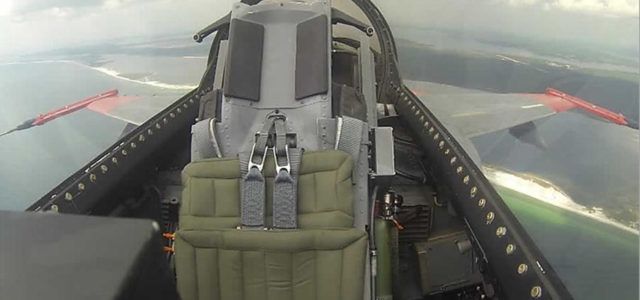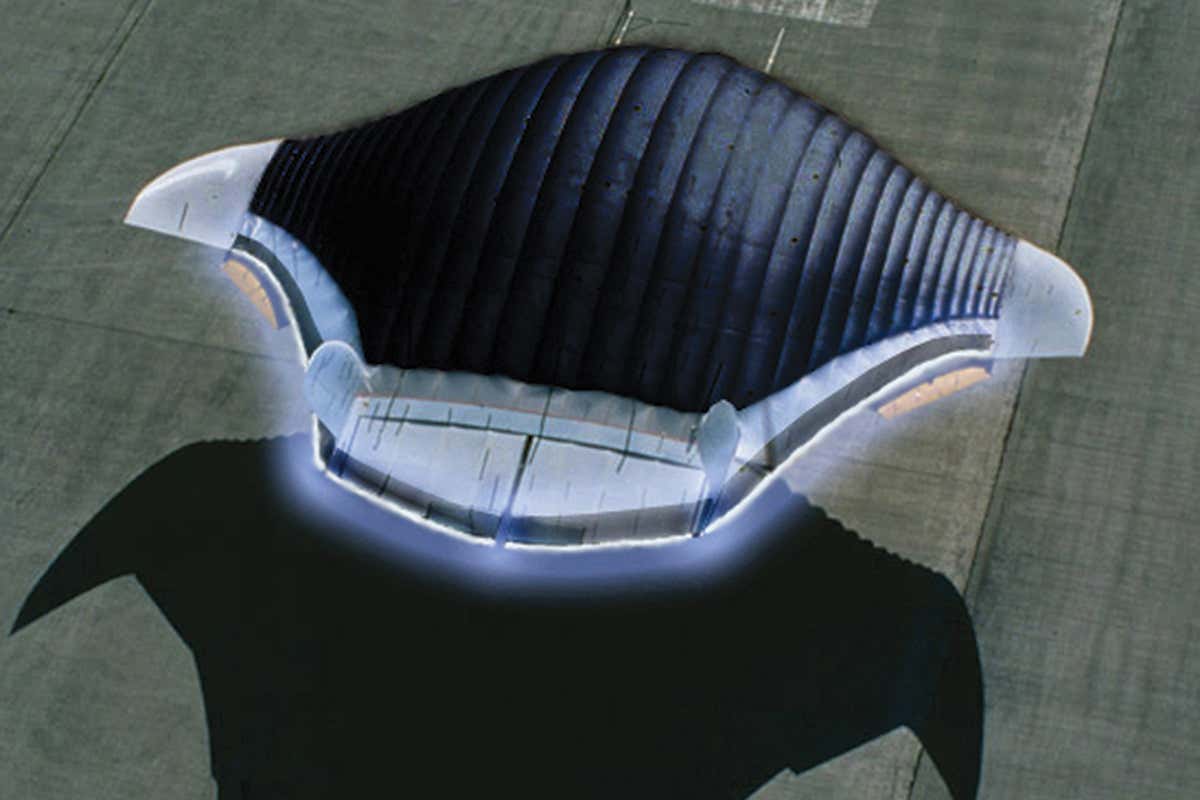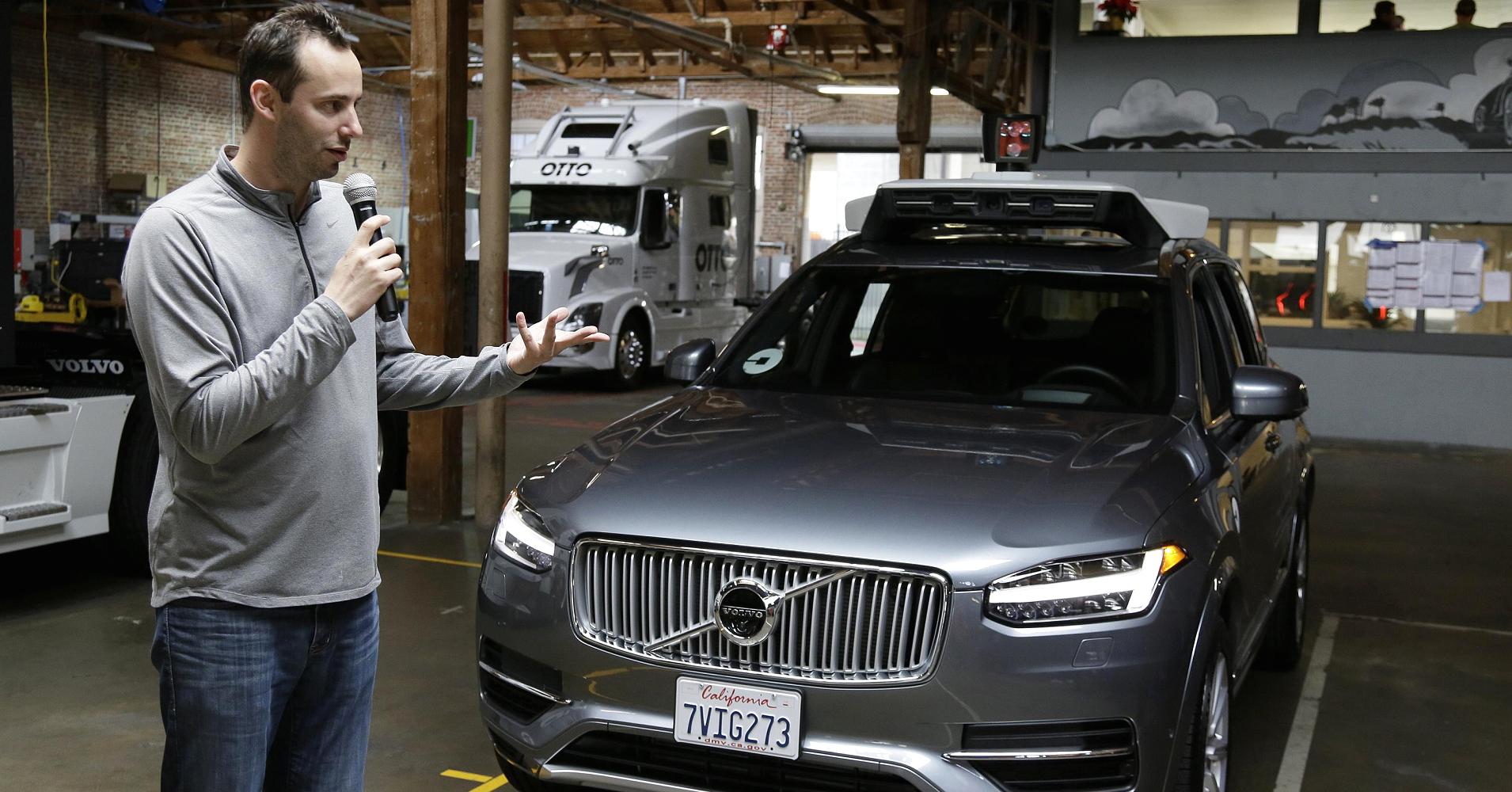Airbus has revealed a trip in its flying taxi will cost ‘the equivalent of a normal taxi’ — from $1.50 to $2.50. The firm is set to release a working craft in 2020 to alleviate the ever-growing issue of traffic jams.
Category: transportation – Page 556
Volvo’s Self-Driving Garbage Truck Wants Your Trash
The truck also offers “major environmental upsides,” Volvo said, since “gear changing, steering and speed are constantly optimized for low fuel consumption and emissions.”
Volvo plans to test the autonomous truck with Renova through the end of the year.
“There is amazing potential to transform the swift pace of technical developments in automation into practical benefits for customers and, more broadly, society in general,” Stenqvist said. “Our self-driving refuse truck is leading the way in this field globally, and one of several exciting autonomous innovations we are working with right now.”

U.S. Air Force Sends Robotic F-16s Into Mock Combat
The U.S. Air Force Research Laboratories and Lockheed Martin have demonstrated a mixed formation of manned and unmanned F-16s in a simulated combat environment.
The Have Raider demonstration at Edwards Air Force Base in California included two phases, Lockheed announced on April 10, 2017. The first phase, Have Raider I, focused on formation-flying. Have Raider II sent the pilotless F-16 on a mock bombing run through “dynamic” enemy defenses.
“This demonstration is an important milestone in AFRL’s maturation of technologies needed to integrate manned and unmanned aircraft in a strike package,” Capt. Andrew Petry, an AFRL engineer, said in a Lockheed press release.

Tomorrow I give a 90-minute talk and Q&A at Moogfest on the cross-country 4-month Immortality Bus journey
My event starts at 4:30PM and is at: Carolina Theatre, Cinema 1 309 W Morgan St, Durham, NC 27701 The Immortality Bus, despite controversy and resistance from some transhumanists, defied many odds and has become one of the widely discussed pieces of art and events in the futurist world. Come watch never before seen slides on how the bus, science activism, and my presidential campaign made its way across America and delivered the Transhumanist Bill of Rights to the US Capitol. http://sched.co/AGbE & https://moogfest2017.sched.com/artist/info6094
Uber’s new app for truckers could disrupt one of America’s core industries
Uber launched a new app on Thursday called Uber Freight, which matches trucking companies with loads to haul.
The formal launch of the app marks Uber’s long-anticipated move into the trucking industry — potentially disrupting one of the most popular professions in the U.S.
With 9.73 million workers, transportation and material moving is the fourth-largest employment group in the U.S., behind office staff, salespeople and food preparation workers, according to May 2016 data from the Bureau of Labor Statistics. Of transportation workers and movers, general freight trucking and specialized freight trucking are among the industries with the highest employment levels, the BLS said.

Elon Musk Finally Confirms What The Boring Tunnels He’s Making Are Actually For
The Rand Corporations 1960’s plans for an underground hypersonic tube train transport system. The plan back then was from NYC to LA in about 20 minutes.
We now have an idea of just what Elon Musk’s Boring Company is going to be for. Yes, it’s to solve traffic, but it looks like it isn’t meant just to be your usual tunnel for cars. In a new update today, the company asserts that it’s actually building a tunnel that can also run the Hyperloop.
Serial entrepreneur Elon Musk is ready to conquer space, roads, roofs, and now even tunnels. What started out as a simple musing on Twitter has become a full-blown startup aptly named The Boring Company. Today, the company added an FAQ page to their website, which offers an abundance of new information about their specific goals.
The most notable announcement that was finally confirmed? The Hyperloop.

Judge blocks top Uber engineer from working on key self-driving technology amid battle with Alphabet
Hopefully this doesnt negatively effect the self driving truck.
One of Uber’s top engineers will no longer be able to work on a key self-driving car technology, a federal judge ordered, adding a new hurdle in the ride-hailing company’s race to get to market.
Uber will be able to continue working on its self-driving car technology, the judge said, but embattled engineer Anthony Levandowski must be removed from any work relating to a key technology called LIDAR, which helps cars “see.”
Alphabet’s self-driving car unit, Waymo, has sued Uber, claiming that the ride-hailing start-up is using key parts of Waymo’s self-driving technology.

Uber must return stolen Waymo files, can continue self-driving work: U.S. judge
SAN FRANCISCO Uber Technologies Inc [UBER.UL] must promptly return stolen confidential files to Alphabet Inc’s (GOOGL.O) Waymo self-driving car unit, a federal judge ruled, while stopping short of shutting down the ride-services company’s autonomous car program.
The judge wrote that Uber knew, or should have known, that an ex-Waymo engineer it later hired had taken Waymo files potentially containing trade secrets, and that some of the intellectual property had “seeped into” Uber’s own development efforts.
The ruling by U.S. District Judge William Alsup in San Francisco, unsealed on Monday, marked a blow to Uber, which is engaged in a battle with Waymo to dominate the fast-growing field of self-driving cars expected to revolutionize the automotive industry.
This Israeli startup has a battery that can charge an electric car in 5 minutes
FlashBattery promises to make charging your car a quick and easy affair.